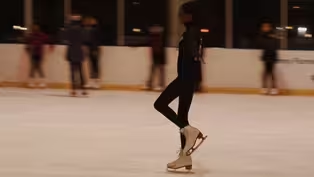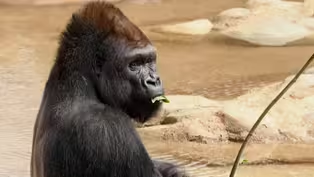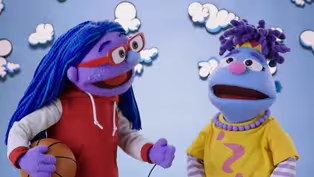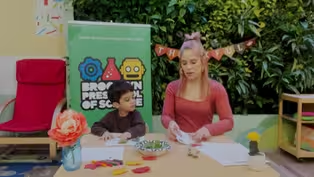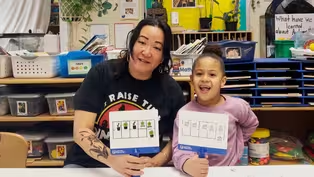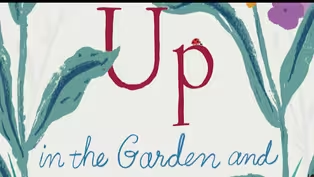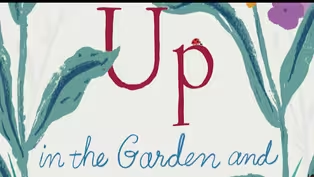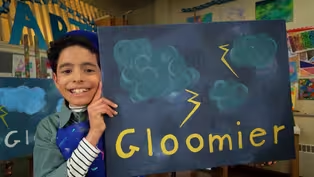
TEA TIME!
Clip: 7/16/2024 | 4m 52sVideo has Audio Description, Closed Captions
See how to make a soothing tea recipe from the 18th century for coughs and sore throats.
Cheyney McKnight from New-York Historical Society makes a soothing tea recipe from the 18th century for coughs and sore throats. She discusses plants used in the past, and ingredients available in stores today.
See all videos with Audio DescriptionADProblems playing video? | Closed Captioning Feedback
Problems playing video? | Closed Captioning Feedback
Let's Learn is a local public television program presented by THIRTEEN PBS

TEA TIME!
Clip: 7/16/2024 | 4m 52sVideo has Audio Description, Closed Captions
Cheyney McKnight from New-York Historical Society makes a soothing tea recipe from the 18th century for coughs and sore throats. She discusses plants used in the past, and ingredients available in stores today.
See all videos with Audio DescriptionADProblems playing video? | Closed Captioning Feedback
How to Watch Let's Learn
Let's Learn is available to stream on pbs.org and the free PBS App, available on iPhone, Apple TV, Android TV, Android smartphones, Amazon Fire TV, Amazon Fire Tablet, Roku, Samsung Smart TV, and Vizio.
Providing Support for PBS.org
Learn Moreabout PBS online sponsorship[bright music] - Welcome to Let's Learn Living History here at the New York Historical Society.
My name is Miss Cheyney, and today we're going to learn about 18th century home remedies for illnesses.
Indigenous people such as the Lenape for thousands of years used the plants all around them, including the knowledge of the people in their communities, to help heal one another.
As New York was colonized first by the Dutch and then by the British, people from all over the world came to this area, bringing their traditions and medical knowledge with them.
250 years ago, there were trained medical doctors and apothecaries, people who prepared and sold drugs for medical purposes.
Today, an apothecary would be a combination of a doctor and a pharmacist, a person who gives adults their prescription medications in the drugstore.
Today, pharmacists only give out medical drugs, but in the 18th century, apothecaries both made them and gave them out.
We know what type of medicines were used in the 18th century because much of this was written down in books.
We also have an idea of the types of remedies people used at home because there were recipe books and manuals.
Even if the healer was a Dutch apothecary, indigenous midwife, farmer, or an enslaved nurse, they all used the herbs available to them.
Today, you can get many of these items at a grocery store or pharmacy.
Now I'm gonna show you how you make a tea for a cough or sore throat that you can make at home.
Please remember to always have the assistance of an adult.
First, we're gonna talk about wild cherry bark.
Wild cherry trees are native to North America.
The bark of the wild cherry tree just peels right off easily into flakes.
I love wild cherry bark because not only is it a great cough suppressant, that means that it can help you stop coughing, it makes the tea really yummy, delicious.
Next we're gonna talk about slippery elm bark.
Slippery elm bark is native to North America.
Only the inner bark is used.
If you chew on it, it will become really slippery.
It coats and soothes the throat.
It's also a great cough suppressant.
And then next, we're going to use fresh mint.
In this case, peppermint.
This provides a very cooling feeling that helps to fight off a cold.
First, you wanna find a heat safe bowl or cup or glass.
And I'm using a mug today, so we're gonna place this here.
And then we're going to grab our slippery elm bark.
Go ahead and pop that all in.
And then we are going to take our cherry bark, and go ahead and put that in.
And you're gonna wait off in putting the mint leaves in.
Because they're fresh, you don't want to leave them too long in the hot water, because then it'll become bitter.
You wanna keep that nice flavor going.
So we're gonna then take our hot water, our boiling water, and pour that in.
And then we're gonna let that steep for about 20 minutes.
And then about two minutes before that 20 minutes is up, you're gonna add in the mint leaves.
[clock ticking] Now it's been 20 minutes, we're going to take our mint, and you're gonna make sure it's washed.
Then we're going to take it right off the stem here and pop about five of them in.
I'm gonna mix those in here.
Oh, that smells really nice already.
So we're gonna wait another two to three minutes.
[clock ticking] Okay, I think it's ready.
So, once your tea is done, you can pour it through a cheesecloth or a strainer, and you can pour that directly into a bowl or another cup.
You can store it, you can cool it off, or you can drink it right away warm.
Thank you for joining us for Let's Learn Living History at the New York Historical Society.
CHEYENNE TEACHES A TWO FOOT GLIDE!
Video has Audio Description, Closed Captions
Clip: 7/16/2024 | 42s | Cheyenne from Figure Skating in Harlem teaches a two-foot glide! (42s)
Video has Audio Description, Closed Captions
Clip: 7/16/2024 | 7m 8s | Mix yellow and blue to make green and paint a plant. (7m 8s)
Video has Audio Description, Closed Captions
Clip: 7/16/2024 | 3m 27s | Meet gorillas who live at the Houston Zoo, where they eat fruit and leafy greens. (3m 27s)
FEEL YOUR BEST SELF: SMELL THE ROSES
Video has Audio Description, Closed Captions
Clip: 7/16/2024 | 3m 41s | Learn a strategy called “Smell the Roses” to refocus. (3m 41s)
Video has Audio Description, Closed Captions
Clip: 7/16/2024 | 6m 42s | Make rubbings using leaves and crayons with Krystal Balmes from the Brooklyn Preschool of Science. (6m 42s)
Video has Audio Description, Closed Captions
Clip: 7/16/2024 | 5m 11s | Play a number flash game with Zoe Kleinmann. (5m 11s)
UP IN THE GARDEN AND DOWN IN THE DIRT
Video has Audio Description, Closed Captions
Clip: 7/16/2024 | 6m 35s | Anna Scretching-Cole reads UP IN THE GARDEN AND DOWN IN THE DIRT by Kate Messner. (6m 35s)
UP IN THE GARDEN AND DOWN IN THE DIRT ASL
Video has Audio Description, Closed Captions
Clip: 7/16/2024 | 6m 36s | Anna Scretching-Cole reads UP IN THE GARDEN AND DOWN IN THE DIRT by Kate Messner. (6m 36s)
WORDSVILLE: THE CASE OF TOO MUCH HAPPY
Video has Audio Description, Closed Captions
Clip: 7/16/2024 | 7m 26s | When Artist Clay's gloomy painting goes missing, everyone in Wordsville is overjoyed. (7m 26s)
Providing Support for PBS.org
Learn Moreabout PBS online sponsorshipSupport for PBS provided by:
Let's Learn is a local public television program presented by THIRTEEN PBS
